Timing is everything for a review. Having reviewed 5 integrated amplifiers during the lockdown caused by the COVID-19 pandemic, I was not in the mental place for another one. But when Yamaha offered to send us the A-S3200 Integrated Amplifier for review ($7,499.95), I removed my mask and took a firm bite. Having begun my audiophile journey in 1983 with the Yamaha CA-2010, I was rather intrigued to listen to my first amplifier from the brand in over 25 years. The Yamaha A-S3200 looked rather formidable from the online imagery and I was not disappointed when I removed it rather carefully from its packaging.


Industrial design matters; and I’m not referring to 3-inch thick faceplates. Regardless if you are spending $80 or $7,500, products need to look like the designer cared about both form and function. Yamaha clearly put a lot of thought into the design of the A-S3200 and it earned raves from the Industrial Designer who has been my better half for almost 2 decades. She’s sold more than 500 designs during her career and her office wall has more design awards than I can keep track of. She doesn’t design audio/video equipment, but she’s suffered through at least 200 pieces over the years and very few have earned her praise. None of that makes her the final authority on what constitutes a successful design, but her perspective often makes me take a step back and rethink how I evaluate a product.
I’m always going to be the final word on how something sounds (to me) in the context of the system it has been inserted into, but if the product design doesn’t make potential customers who are not audiophiles take a closer look – it’s already failed.
I’m sure that sounds harsh.
Why am I harping on this particular topic? Because I read a ridiculous statement in another review that criticized the Yamaha A-S3200 for not looking “high-end” for its asking price.
Sure. Because 3-inch faceplates and unnecessarily large sharp heatsinks that weigh more than my 7 year-old make something “high-end.” If that’s your standard — go with it.
Not me. And it shouldn’t be your standard either.


Great industrial design and sound quality have to exist together at the end of the day.
On the flip side – there are high-end products that follow the “less is more” rule, where the creators still managed to create timeless pieces of art.
Don Garber (Fi) made the most beautiful and unique looking amplifiers and preamps I’ve ever seen in over 40 years of being an audiophile. I owned 3 of them. I kick myself for ever selling them. They also made music sound beautiful. The reviewer who criticized the industrial design of the Yamaha A-S3200 would have had a field day with X3 or X 300B amplifier. RIP Don.
So where does that leave the Yamaha A-S3200?
It’s both a timeless piece of art with its knobs, switches, and illuminated VU meters that became the focal point of our den for almost 2 months – and one great sounding amplifier.
Often brilliant sounding with the right loudspeakers.

Under the Hood of the Yamaha A-S3200
- Fully balanced circuitry
- Large 623 VA toroidal transformer
- Mechanical Ground Concept maximizes rigidity and reduces unwanted vibration
- High-quality PPS capacitors
- Illuminated VU level meters
- Heavy-duty brass feet with spikes or scratch-resistant base
- Speaker terminals cut from pure brass with highly secure connection
Specifications:
- Rated Output Power: 100 W + 100 W (8 ohms), 150 W + 150 W (4 ohms)
- High Dynamic Power/Channel (8/6/4/2 ohms): 120/150/200/300 W
- Signal-to-Noise Ratio: Phono MC: 90 db, Phono MM: 96 dB, CD, etc.: 110 dB, BAL1,2: 114 dB
- Dimensions (W x H x D): 17-1/8″ x 7-1/8″ x 18-1/4″
- Weight: 54.5 lbs

The Sound
Every night around 8 pm, I started a ritual where I would turn the A-S3200 on and give it 20 minutes to warm up. It never really gets hot. Even when driven hard for long stretches of time. I’ve run my hand over the top cover after long listening sessions and it was never an issue. I wouldn’t stick the amplifier inside a cabinet and do this, but it takes a lot to overheat this product.
I also never really used any of the tone controls. Not a fan and I didn’t find that it made a huge impact on the sound with any of the tracks that I experimented with.
In some respects, the A-S3200 didn’t feel very “audiophile” in the way it dealt with imaging or detail. If you’re looking for a hyper-detailed sounding amplifier – look elsewhere.
The A-S3200 did one thing exceptionally well; and it’s rather important in my opinion.
Really good high-end equipment finds a way to tie it all together. Not in a pretty bow, but in a way that makes you feel that you’re listening to a recording that you’ve heard 1000 times – for the very first time.
That happened a lot with some older and decidedly non-audiophile recordings from the new wave music that I loved in my teens.
Talking Heads, Talk Talk, New Order, and the Cure felt almost overwhelming at moments.
Listening to Speaking in Tongues, or Remain in Light was a new experience through the A-S3200. The midrange has a definite bump and the wall of sound had my jumping out of my chair to join David Byrne on stage. Robert Smith told me to get off the fucking stage more than once.
That’s what great sounding audio equipment should always do.
I hated turning this amplifier off around midnight. You just wanted to reach for another record, or pull up another recording on Roon and see what the Yamaha could do with it.
If a component doesn’t make you feel what you’re listening to – you’re wasting your money.
Bravo to Yamaha for getting this so right with the A-S3200.
Competition
There is no shortage of competition in this category above $5,000, and the folks at Yamaha are well aware of that reality.
Brands like Luxman, McIntosh, Cambridge Audio, Audio Research, Rotel, and Hegel offer some compelling options to the Yamaha A-S3200.
If the A-S3200 has one significant fault, it would be the absence of an internal DAC. Yamaha designed this to be an integrated amplifier/pre-amplifier and in those roles — it’s a hard component to fault.
Consumers spending $7,500, however, on a component want to get the most out of that purchase and the industry trend is to include a 24-bit/192kHz (or higher) DAC to make this a one-stop solution.
The Cambridge Audio Edge A that I used for comparison purposes is priced at $6,000 and it offered some serious competition to the Japanese amplifier in a few areas that might matter to those looking in the $5,000 – $10,000 bracket.
The Edge A offers a lot more power and grunt with demanding loudspeakers. My Magnepan LRS (I know they are only $650) require a lot of current, and I rarely have to turn the volume dial on the Cambridge amplifier very far to drive them to very loud levels.
When I partnered the Yamaha with the LRS, the amplifier had no issue driving the low impedance load, but it wasn’t quite as effortless as the more brutish Edge A. The Maggies don’t extend very low in the bass department, but the Cambridge amplifier had a firmer grip on the panels and there was definitely more impact.
From a tonal perspective, the Yamaha A-S32000 is a warm sounding amplifier. There is nothing neutral or sterile about it. With the LRS, that proved to be a good thing because they certainly need some additional color in the midrange, and it kept the top end in check.
Analytical sounding loudspeakers will love the Yamaha.
The Edge A handles imaging and soundstage depth very differently than the A-S3200. If you want an amplifier that carves out very defined images in space – the British amplifier will be more your speed.
The A-S3200 creates more of a wall of sound that extends well beyond the sides of the loudspeaker and further into your listening space.
Which one does the human voice better?
Depends on the loudspeaker.
The Q Acoustics 3050i and Magnepan LRS were very transparent sounding and detailed with the Edge A, but there wasn’t the same degree of emotional connection with the performer. The Yamaha A-S3200 trades that level of transparency for flesh and blood and I found myself far more engaged with Sam Cooke, Sarah Vaughn, Nick Cave, Mazzy Star, and the late-Amy Winehouse.
Nils Frahm, Max Richter, and Bruce Hornsby all sound completely different on the same instrument, and I often find myself unsatisfied by amplifier/loudspeaker combinations that can’t reproduce the weight and proper tonality of the piano, synthesizer, and pipe organ.
The Edge A is fantastic with the weight (presence) part, but a tad cooler than the Yamaha from a tonal perspective.
The internal DAC of the Edge A is an excellent performer, but I have heard better digital playback from less expensive DACs plugged into its analog inputs. I’ll have more to say about that in a future article.
The Yamaha A-S3200 requires a DAC and I found satisfying success with a myriad of options from Schiit Audio, AudioQuest, HiFi Rose, and Clarus Audio. I suspect that the Chord Qutest would match up beautifully with the Yamaha amplifier.
The Edge A does not come with a phono stage. Not a great move considering the price of the amplifier.
Yamaha has designed a MM/MC phono stage for the A-S3200 that is one of the best I’ve heard from any integrated amplifier below $10,000. It loved my Ortofon 2M Black, 2M Bronze, and Dynavector 10X5 cartridges. Clear, detailed, tonally rich, and low end performance that had me listening to my new Blue Note Tone Poet releases with less guilt – I’ve been spending too much on records so far in 2021.

Conclusion
When we announced our pivot to more affordable audio, I knew that this would be the last review of its kind as a $7,500 component doesn’t fit very well into our $10,000 system approach for new audiophiles. I started my audio journey with Yamaha. It brought me over 10 years of incredible sound quality and opened my mind to so many possibilities in regard to enjoying my favorite music in a more meaningful way. The Yamaha A-S3200 is a world-class component that is a joy to use, visually stunning at night, and perfect for those who use both headphones and vinyl in their daily listening.
Yamaha has built a serious piece of kit here. You need to hear it. The A-S3200 might be the last amplifier you’ll ever need.
For more information: Yamaha A-S3200 Integrated Amplifier
Where to buy: $7,999 at Amazon | Crutchfield


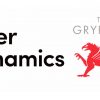


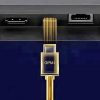








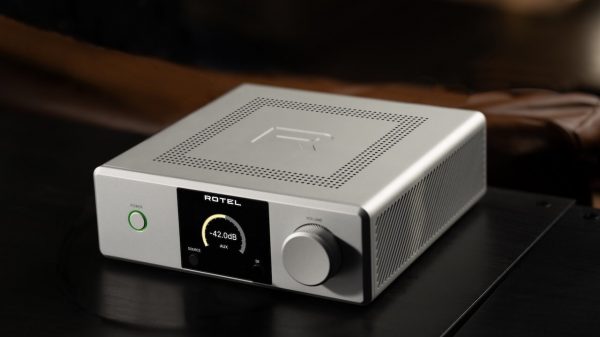
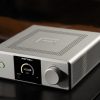

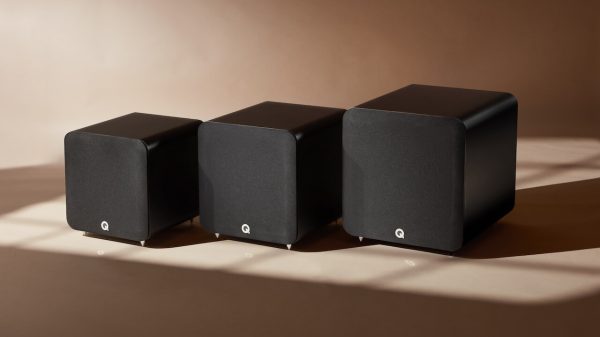

















Jeremy Sikora
March 1, 2021 at 11:52 pm
Yamaha made the right choice with the VU’s!
Ian White
March 2, 2021 at 12:42 am
It looked so badass at night. I would crank it in the dark and you could see the needles jump from across the room.
Sweetness.
Spenser
April 9, 2021 at 5:29 pm
What is really the pragmatic conclusion?: the 3200 is a “Work Of Art.” It is not, however, a “Sonic Work Of Art.”
It is all casework, complexities and girth but it doesn’t do all that much. Yes, it sound good as a $7,500.00 integrated amp should but, for the money, buy a Bryston, get better sound, more features and a 20 year warranty.
Times and Fortunes have changed and paying for the Japanese’s “Anal Retentiveness” is passe. Buying a Rolls Royce to sit either in a driveway or in a garage is sheer lunacy as it would be to buy the 3200 and have a spectacular look while a similar McIntosh will surpass it in every pragmatic way!
Save your money by buying with your brains instead of buying into the antiquated mind-set that size, complexities, casework and shiny exteriors.
Ian White
April 9, 2021 at 5:53 pm
I’m going to agree and disagree with you. I do agree that comparable McIntosh products offer more features and better sound quality. The 3200 can be used as an integrated amplifier, preamp, headphone amplifier, and it has an excellent phono stage. It could be built to a higher standard without the fancy front panel with the VU meters, but it does sound excellent. I’m not the market for it. I buy $1,000 phono stages, 1,500 speakers, and $2,000 amplifiers or integrated amps.
Spenser
June 2, 2022 at 11:12 pm
What is there to disagree with? For virtually $8,000.00, the emphasis is on “Build-quality” – not sonics.” It does not have particularly good resell value for it does not double its output into 4 ohms and there is absolutely, positively, no mention, by anyone, what the 3200s 2 ohm output is?
Yamaha will tell you, California and Japan, not connect the 3200 to a pair of electrostatic speakers because the Yamaha is not designed for long-term output into either 4 or 2 ohms.
By a McIntosh, and the worry you have is finding a shelf to support its weight!
MadMex
April 15, 2021 at 2:43 am
Bryston’s only integrade looks like a brick with buttons compared to this Yamaha beauty with knobs. Who cares about 20-years warranty? It’s a cover to lay down your cash. At this level these things are built to last, like cast iron skillets. They both sound real fine, I’m sure of it.
Ian White
April 15, 2021 at 10:05 am
Yes and no. Bryston’s reliability is excellent (I owned one of their amps years ago) but their warranty give the amps a lot of resale value.
Not every $$$ amp is built to last. I’ve had a few European amps that were very expensive either detonate or die early deaths.
In this case, the Yamaha has a lot of excellent features (superb phono stage) aside from just the industrial design.
I was genuinely sad to send it back.
Lash
August 9, 2021 at 1:51 am
They can’t be serious. 7500 for…THAT??
An amp that doesn’t double output into 4 ohms?
And, lest we forget…it’s a Yamaha.
It must be a joke….
Ian White
August 9, 2021 at 1:58 am
Lash,
They are very serious about it. I don’t think it’s a great value for the money but it does sound excellent as long as you get the loudspeaker right.
The phono stage is the best part.
Ian White
Mike Cornell
August 9, 2021 at 12:38 pm
I agree that thenYamaha is a beautiful piece of kit and from your description of the sound, it would be something I’d be interested in, though you didn’t say much about the bottom end. At that price, I’d have to compare it with Macs and also Luxman and Accuphase. I’m wondering about the A-S2200 and 1200. If they retain most of the goodness, they may be the better buy. Also would like it with walnut side panels instead of gloss black.
Ian White
August 9, 2021 at 2:05 pm
Mike,
I’d give the nod to the Luxman at that price point.
The Yamaha sounds very good, but I also didn’t use it with very demanding loads based on what I had at home during the review.
I own a Cambridge Edge A which has a very different tonal balance but delivers much more impact below and can drive almost anything.
Ian White
Spenser
August 18, 2021 at 11:14 pm
Yamaha will tell you…both in California & Japan…that the 3200 should not be connected to a pair of electrostatic speakers.
The 3200 is simply not designed for any speaker much below 4 Ohms. Stereophile has already conformed this in their review of it.
For $7,500.00 buy the McIntosh 7200 Stereo Receiver or the MA152 and run it with either a good transport for the 7200 or the MCD-600 for the MC152.
You will be amazed at the sonics; also, either an Esoteric or an Accuphase are superior sonically not, perhaps, the asthetics.